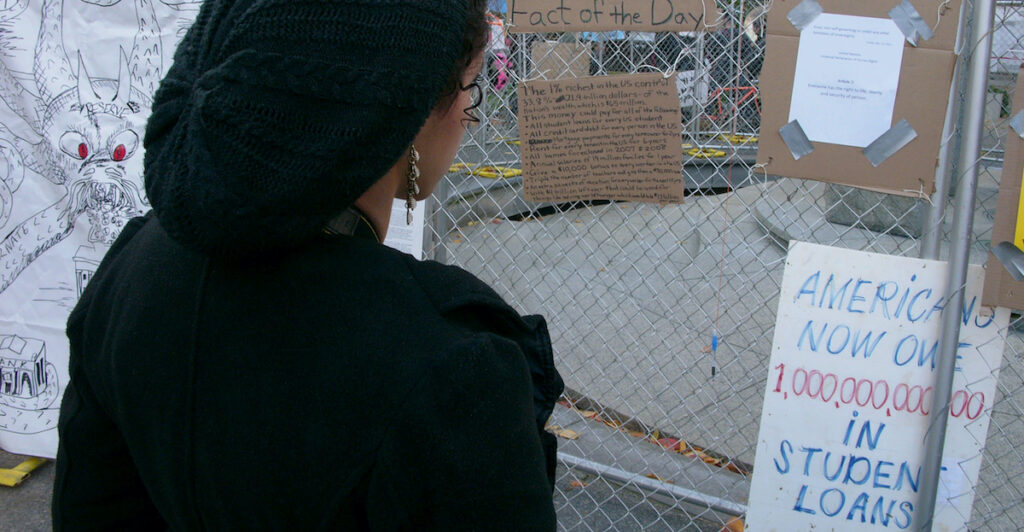In 2016, California passed the Student Loan Servicing Act, which gave the Department the authority to license student loan servicers. While it created some protections for borrowers, it did not offer the kind of financial protections necessary to address the student debt crisis. With close to 4 million borrowers in California owing billions in student debt, it was critical for one of the largest states in the nation to create additional protections.
In 2019, the Student Borrower Bill of Rights was introduced and backed by a coalition of 70 civil rights, higher education, and consumer advocacy organizations. Signed into law by Gov. Gavin Newsom in 2020, it expanded protections for student borrowers in the military, public service workers, older borrowers, and borrowers with disabilities.
For the first time ever, it required servicers to work in the best interest of borrowers, prohibiting servicers from giving student loan borrowers inaccurate information or taking advantage of misunderstandings.
A New Era for Student Protections
Prior to the Student Borrower Bill of Rights, California borrowers had minimal protections. Without safeguards to help student borrowers understand their rights and get out of debt, consumers were left to navigate a complex and confusing system on their own. Plagued with predatory practices, servicers were found to routinely lose paperwork, misapply payments, be unresponsive, give inaccurate information, and even steer borrowers into repayment options that added to the overall cost of their loans, causing them to fall behind on payments and slide toward default. The 2020 law helped usher in a new era of accountability, providing a set of rights for student borrowers that helped protect consumers.

Pittsburgh, PA USA. Young woman looking at hanging sign about student debt. (Photo by Shutterstock)
Student Borrower Bill of Rights
Today, the Department plays a critical role in overseeing student loan servicers, including some depository institutions, private postsecondary educational institutions and, to a certain extent, FFELP guaranty agencies.
Some of the specific requirements include:
- Prohibits unfair or deceptive practices toward student borrowers.
- Establishes special protection for military borrowers, borrowers working in public service, older borrowers, and borrowers with disabilities.
- Servicers must provide accurate information about repayment options. Borrowers must be given accurate information about income-based repayment plans or other flexible repayment options to avoid default.
- Servicers and lenders cannot omit important information. They must present all the important information about a loan and not misrepresent the information in any way.
- Servicers cannot take advantage of misunderstandings. They are required to work in the best interest of borrowers, even if it means missing out on profits.
- Servicers must process payments and other documents in a timely fashion. Payments that are received before midnight on the payment day should be marked as on time.
- Servicers and lenders must minimize their fees. Fees are capped at six percent of the amount past due.
- Servicers must apply payments correctly and in a way that minimizes fees, charges, and interest payments. Overpayments must be posted and processed in the best financial interest of borrower.
- Servicers must respond to disputes and other requests for information from borrowers either orally or in writing. The servicer must respond to a Qualified Written Request (QWR) within 30 business days
- Servicers must improve their record keeping and keep their records up to date so borrowers can manage their payments appropriately
- If a student loan is transferred the servicer must notify the borrower of the new servicer 15 days before the borrower is required to send in a payment.
- A borrower has the right to legal action against their servicer if they fail to comply with these laws. This is called a ‘Private Right of Action’ and allows borrowers to collect damages and restitution if their rights have been violated.
- Created Student Loan Services Ombudsperson to serve as advocate for student loan borrowers.
Local context for a national crisis
Student loan debt is a nationwide crisis. Borrowers report that the burden of student debt affects every aspect of their lives, from buying a home to saving for retirement. Protecting borrowers not only benefits individual borrowers, but also local economies.
California is the first state in the nation to establish a robust set of standards that promote financial security and economic justice for California borrowers. By establishing the Student Borrower Bill of Rights, California has guaranteed that millions are afforded the consumer rights and protections they deserve.
Our Role in Protecting Student Borrowers
Within the Department, there is a legal and enforcement unit that monitors student loan servicers and takes legal action as necessary. A supervision unit examines and licenses private student loan servicers. A consumer services office (reviews student loan borrower complaints, including those dealing with unlawful activity, or if fraud or scams. With a sharpened focus on student borrowers, we are engaged in multiple activities to oversee the student loan industry and work closely with groups protecting student loan borrowers.
In 2020, the Student Loan Services Ombudsperson position was filled, a requirement of the Student Borrower Bill of Rights. The ombudsperson works with other divisions within DFPI to evaluate challenges facing student loan borrowers, monitors the development of federal and state laws and policies and partners with other agencies to reach student loan borrowers. The ombudsperson responds directly to student borrower complaints and sometimes works with student borrowers directly.
For more information, visit https://dfpi.ca.gov/backontrack/.
